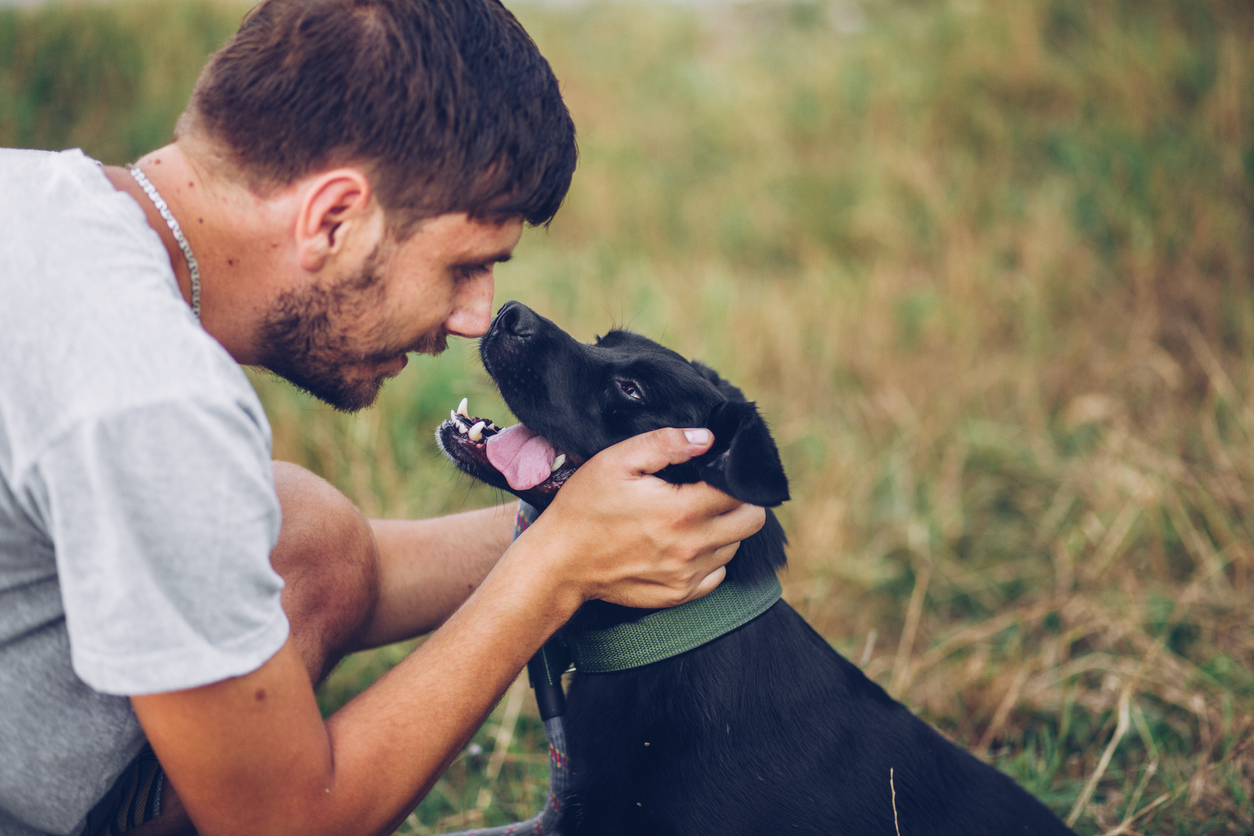When your dog gets pregnant, it’s an exhilarating time for everyone. Not only will you be meeting some adorable new puppies in the near future, you’ll get to watch them growing up from day one and observe every stage of their incredible development. And they won’t be just any puppies, either – they’ll have your unique, wonderful dog as their mother, and you’ll bear witness to her amazing transformation as well.
As exciting as dog pregnancy is, it can also instill feelings of anxiety and worry, especially if you’ve never cared for a pregnant dog or raised puppies before. There’s so much to know that it’s easy to get overwhelmed by all the information out there. But don’t panic, puppy-grandparent-to-be, this guide has got you covered!
We’re about to go over everything you need to know about your pregnant dog, from her fertility cycle to the length and stages of her pregnancy to her dietary needs. Once you’re prepared, you’ll be able to be a comforting presence to your dog throughout her pregnancy and beyond. Pull up a chair and get ready to become a dog pregnancy expert!
Before Pregnancy: Dog Fertility and Mating
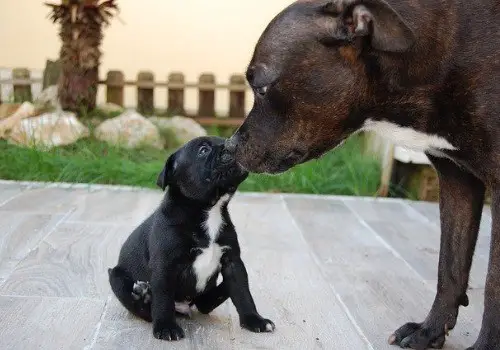
The Reproductive Cycle
Every species of animal, including the domestic dog, has its own unique reproductive cycle – the recurring fluctuation of hormones that determines a female’s ability to get pregnant. The human reproductive cycle repeats itself once a month, while domestic cats complete their cycles every two to three weeks. Dogs, in contrast, have a cycle that lasts a whopping six months, meaning that a female dog is only fertile twice a year!
The canine reproductive cycle has four stages: proestrus, estrus, diestrus and anestrus. Each of these stages has different symptoms, and you’ll need to be able to identify them in order to tell exactly when your dog is able to get pregnant (and, if she’s already pregnant, when conception occurred).
Proestrus
This is the very beginning of a dog’s fertile phase, or heat, and lasts for an average of nine days. Some dogs don’t experience this stage at all, while others will spend up to four weeks in proestrus. During proestrus, a dog’s estrogen levels peak and her ovaries begin to prepare their egg cells (ova) for fertilization by sperm from a male.
Male dogs can detect when a female is in proestrus by picking up on the scent of her hormones and pheromones. The smell tells them that she’s getting ready to mate, which excites them; they’ll start to take an interest in her and may attempt to mate, though she’s not yet fully prepared and won’t permit them to mount her. When a dog is in proestrus, her vulva will be swollen and her vagina will produce a bloody discharge.
Estrus
Once proestrus ends, the female enters the estrus stage and is ready to mate. Now that she’s able to get pregnant, she’ll be receptive to advances from male dogs for the next three to 14 days, and she’ll probably start whining and holding her tail to the side to attract them. She’ll produce less vaginal discharge now and it will be clearer and less bloody than it was during proestrus.
If the dog is mated with while she’s in estrus, there’s a good chance that the male’s sperm will reach the eggs that have descended from her ovaries into the Fallopian tubes. When this happens, the eggs become fertilized; this is the moment of conception and the dog is now considered pregnant. Whether conception occurs or not, the dog will enter the next stage of the reproductive cycle: diestrus.
Diestrus
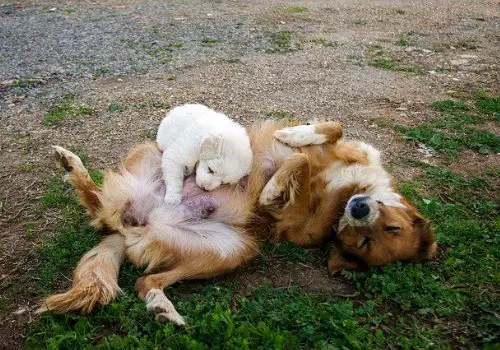
Diestrus is the post-heat stage of the cycle and takes on one of two forms depending on whether any eggs were fertilized or not. If they were, diestrus is called pregnancy. For the next 55 to 68 days, the dog’s progesterone levels will rise and her body will change as the fertilized eggs in her uterus transform into puppies.
If the dog wasn’t mated with, or if mating was unsuccessful due to male infertility or bad luck, diestrus still occurs, but it looks quite different. The dog’s progesterone levels will still rise, but not as much as they do during pregnancy, and she obviously won’t experience any symptoms of pregnancy. Diestrus lasts longer in non-pregnant females than in pregnant ones, spanning between 60 and 90 days.
Regardless of whether she’s pregnant or not, a dog in diestrus will stop being receptive to male dogs, and they will usually stop taking much of an interest in her. Her discharge may appear redder for a few days before tapering off and stopping entirely. Once the pregnancy ends (or non-pregnant diestrus elapses) the female enters anestrus, the longest and final stage of the reproductive cycle.
Anestrus
During anestrus, fertility is at its lowest. The dog won’t show any sexual interest in males, her vulva will return to normal and her hormones will be largely inactive. This phase lasts around six months, though it can last up to nine months in smaller breeds and as few as four months for the largest breeds.
Dog Pregnancy Week by Week
So your dog came into season, mated and is now pregnant. Congratulations to you both – it’s going to be such a rewarding experience, both over the next nine to ten weeks of pregnancy and the ensuing months of puppy rearing! Here’s what to expect during each week of your dog’s pregnancy and some tips on how to give her the care and comfort she needs during this demanding time.
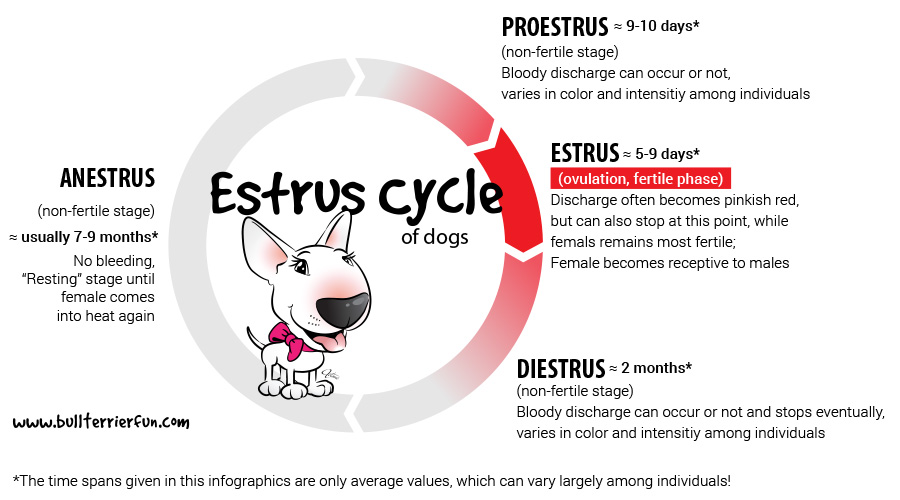
Week One
After mating, it can take two to three days for the fertilization process to complete. Once a sperm cell merges with an egg cell, an embryo is created – the very beginning of a new life. Half of this future puppy’s DNA comes from its mother via the egg, while the other half comes from the father via the sperm.
The embryo begins growing as soon as it forms, with each cell dividing over and over again into clones of itself. Over time these new cells will accumulate into bones, muscles, and organs, gradually assembling into the shape of a puppy. For now, though, it simply looks like a tiny round ball as it descends lower into the uterus.
You probably won’t be able to tell yet if your dog is pregnant; she may not show any symptoms and tests won’t be accurate until at least week four of the pregnancy. If you do notice any changes, they’re likely to be very subtle. Her vulva may remain slightly swollen and her nipples may get larger.
Weeks Two and Three
Most changes during weeks two and three are still internal, although you may begin noticing a change in your dog’s appetite. She’ll only get hungrier as the pregnancy progresses, requiring more nutrition and energy to support the puppies growing in her womb. However, she’s not yet at a point where weight gain is necessary, so don’t give in to her food begging just yet; keep her food schedules and portions the same for now.
It’s important to keep up with the other aspects of your dog’s lifestyle during this time as well, particularly grooming and exercise. While you should avoid anything that stresses her out, such as intense grooming around the abdomen and rough play, she should be able to handle regular daily walks and gentle brushings just fine. The best way to reduce pregnancy-related stress is to maintain business as usual – it’ll benefit her and you, too!
In the uterus, the embryos are making lots of progress. They’ve embedded themselves in the uterine lining and formed special membranes that protect the embryos in addition to transferring nutrients from mother to baby in utero. These membranes will give the embryos all they need to develop over the coming weeks.
Week Four
This is a big week for you and your dog: it’s time for her first prenatal vet visit. Your vet will be able to perform several different tests to confirm pregnancy and check on the health of the embryos. While in the office, you’ll also be able to get advice on your dog’s diet and learn about vitamins and supplements that can ensure a healthy pregnancy.
Your vet may start off with palpation – a fancy word for gently feeling the dog’s stomach to check for the presence of embryos. This is the best time for palpation; any sooner and the embryos aren’t large enough to feel, any later and the embryos lose their distinctive round shape and become harder to tell apart from mere fat. After palpating, the vet may perform either an ultrasound, which creates an image of the embryos and can detect heartbeats and some abnormalities, or a blood test, which checks for the presence of relaxin, a hormone produced by the placenta.
Big changes are occurring in the womb this week. The legs and feet are beginning to separate from the rest of the body; tiny rudimentary eyeballs are also starting to form. One more week and the embryos will have developed enough to officially become fetuses.
Week Five
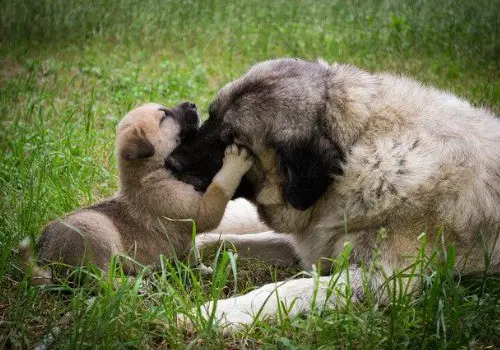
This week, your dog’s pregnancy is starting to become obvious. Her belly is beginning to get rounder, her nipples are swelling and her appetite is skyrocketing. Your vet will be able to give you more specific advice as to her dietary needs, but generally you’ll want to decrease her portion sizes but increase the frequency of her feedings.
As the fetuses grow, they stretch the uterus, causing it to put pressure on the stomach. This effectively decreases her stomach capacity and necessitates smaller food portions. Simultaneously, the expanded uterus can squeeze the bladder, causing your dog to pee more frequently or have accidents around the house; this is normal and should not result in discipline, for it’s truly uncontrollable.
Your dog may be considerably more affectionate from this point on, practicing her mothering skills on you. A decrease in physical activity and an increase in desire for cuddles is typical. Try to indulge her as much as you’re able; the comfort your love provides is essential to her happiness and well-being right now.
Week Six
Mama’s nutritional needs are changing as her babies grow, and many vets recommend a new diet beginning in week six. Puppy food is dense with calories and protein, allowing your dog to eat smaller portions while still consuming more of the nutrients she and her fetuses need. Depending on her breed and overall health, your dog may need a daily multivitamin from this point on; consult with your vet to find out if this is the case and don’t give her any supplements unless advised to do so.
The fetuses are now shaped like puppies, with claws, tails and mouths. Their soft skeletons are just beginning to harden and the earliest signs of fur are starting to appear.
Week Seven

We’re in the final stretch of your dog’s pregnancy now. She’s looking very round and probably very tired at this point – with three to ten rapidly growing and wriggling puppies inside her, can you blame her? She may start to shed fur from her belly and search the house for a warm, quiet birthing spot in preparation for her due date.
Mom and babies are vulnerable to parasites right now, particularly worms. Your vet can advise you on an appropriate deworming treatment that’s safe for use during pregnancy. Worms can harm the fetuses and cause problems during birth, so it’s critical to eliminate them if they’re present and prevent them if they’re not.
Week Eight
If you’re curious about the size of your dog’s litter, now’s the time to find out. With fully solidified skeletons, the fetuses should now be visible on an x-ray. Your vet can analyze the x-ray and count the skeletons to find out just how many puppies are going to be born, though don’t be surprised if the count ends up being off by a puppy or two – sometimes it’s tough to tell where one fetus ends and another begins!
Back at home, your dog has probably selected her birthing, or whelping, area. If she hasn’t, you’ll want to make one for her and let her get comfortable in it. Pick a warm, quiet room that she can use for the next few weeks and lay down some soft blankets or towels that you don’t mind getting ruined, as birth can be messy!
Weeks Nine and Ten
Around a week before giving birth, your dog will start to lactate, leaking milk from her nipples. If she’ll let you, it’s a good idea to trim the fur around her nipples and vulva in preparation for birth. Things will go much smoother if these areas are clean and easily accessible.
Your dog can tell that something big is coming, and she may seem anxious and restless. A day or two before going into labor, she may stop eating and her body temperature will drop. Her vagina may start producing a clear discharge just before her contractions start.
In these final weeks, it’s important for you to monitor your dog’s condition carefully, especially when she finally goes into labor. Make sure she always has fresh water and access to her whelping area. Avoid stressing her out with loud noises, sudden changes or unwanted attention as this discomfort can cause complications during labor.
Giving Birth

Labor can be over in an hour or last for 24 hours depending on the size of the litter and the health of the dog and fetuses, but usually one puppy is born every 30 to 120 minutes. The puppies may come out head first or feet first; both are normal. Each puppy will be encased in a fetal sac that the mother will tear off once it’s fully emerged, but if she doesn’t do it herself then you can do it very gently while wearing disposable gloves.
Your dog will be able to handle the birth herself and you shouldn’t intervene unless absolutely necessary. Check up on her every ten minutes or so but don’t pet her or try to help pull the puppies out of the birth canal. Keep your vet on speed dial in case of an emergency such as a stuck puppy, a stillborn puppy or excessive bleeding or pain.
Once your dog is done giving birth, she’ll probably eat the placenta and start to nurse the puppies. Continue to check on them and provide her with food and water but try to avoid touching the babies for the first week or so. They need time to bond with their mother and get accustomed to life outside the womb.
